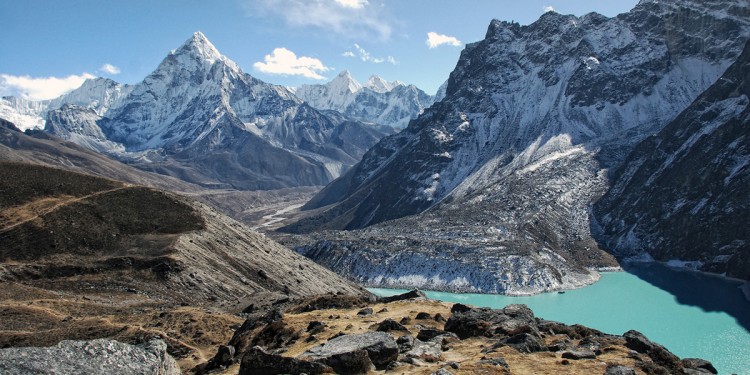
Forces in the Earth's crust determine the height of mountain ranges
Which forces and mechanisms determine the height of mountains? Researchers at the University of Münster and the German Research Centre for Geoscience (GFZ) in Potsdam have now found a surprising answer: It is not erosion and weathering of rocks that determine the upper limit of mountain belts, but rather an equilibrium of forces in the Earth's crust. “Our study shows that mountain ranges are able to react to processes on the Earth's surface and to grow in response to rapid erosion in such a way that the balance of forces and the height of the mountain range are maintained,” says Prof. Ralf Hetzel from Münster University. This is a fundamentally new finding for the Earth Sciences and opens up numerous opportunities to study the long-term evolution and growth of mountains in greater detail. The study was published in the journal “Nature”.
Background and method:
The highest mountain ranges on Earth – such as the Himalayas or the Andes – extend along convergent plate boundaries. At such plate boundaries two tectonic plates move toward each other, and one of the plates is forced beneath the other into the Earth's mantle. During this process of subduction, strong earthquakes repeatedly occur on the plate interface, and over millions of years mountain ranges are built at the edges of the continents. Whether the height of mountain ranges is mainly determined by tectonic processes in the Earth's interior or by erosional processes sculpturing the Earth's surface has long been debated in geosciences.
The new study now shows for the first time that erosion by rivers and glaciers has no significant influence on the height of mountain ranges. The researchers arrived at this surprising result by analysing the strength of various plate boundaries and calculating the forces acting along the plate interfaces. They used data from around the globe that provide information about the structure and the strength of plate boundaries, which are, for example, derived from heat flow measurements in the subsurface. The heat flow at convergent plate boundaries is in turn influenced by the frictional energy at the interfaces of the continental plates.
Collecting data on friction in the subsurface of mountain ranges
For their study, the researchers collected data from the literature on the friction of plate boundaries with mountain ranges of different heights – the Himalayas, the Andes and mountains in New Zealand, Sumatra and Japan. They calculated the resulting stress and thus the forces in the subsurface that lead to the uplift of the respective mountains. “In this way we showed that in active mountains the force on the plate boundary and the forces resulting from the weight and height of the mountains are in balance,” emphasizes first author Dr. Armin Dielforder from the GFZ German Research Centre for Geoscience in Potsdam. Such a balance of forces exists in all the mountain ranges studied, although they are located in different climatic zones with widely varying erosion rates.
Original publication:
A. Dielforder et al. (2020): Megathrust shear force controls mountain height at convergent plate margins. Nature; DOI: 10.1038/s41586-020-2340-7
